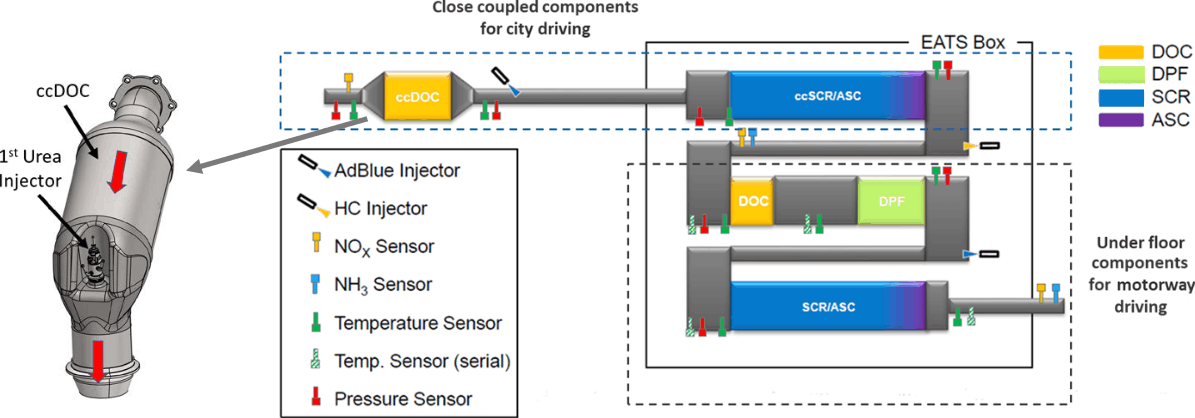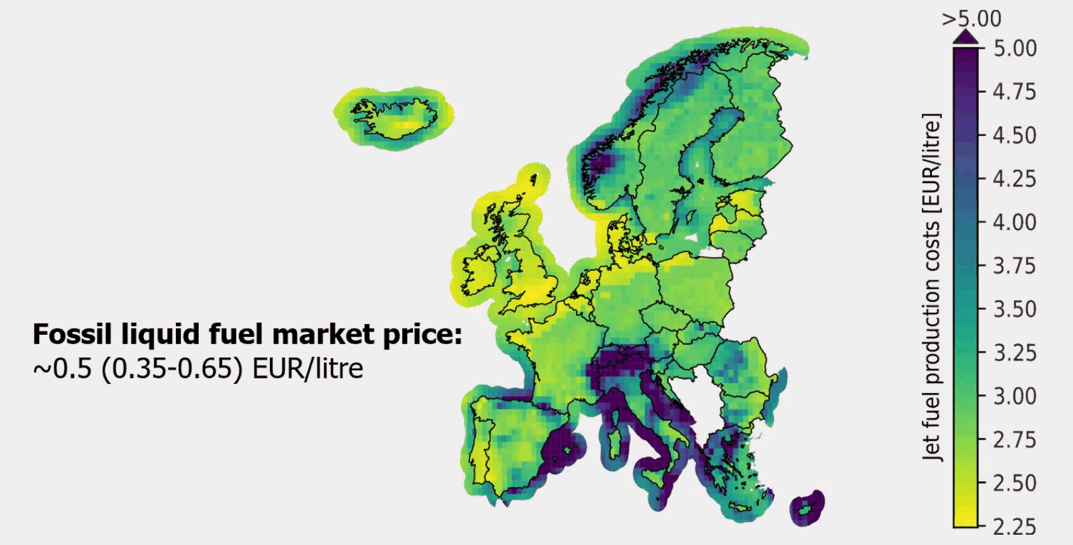Conference report: 24th ETH Conference on Combustion Generated Nanoparticles
29 June 2021
The 24th ETH Conference on Combustion Generated Nanoparticles was held as an online event on June 22-24, 2021. The conference program included 39 presentations and 12 posters on a number of topics, including particle fundamentals, particles from aircraft, marine and other sources, emission measurement, emission control, and health effects of air pollution. The conference closed with a Focus Event—Combustion and Climate Change, dedicated to the reduction of GHG emissions from the transport sector. The conference also included an exhibitor session with the participation of suppliers of emission measurement instruments and related products and services.
Please log in to view the full version of this article (subscription required).
Emission Control and Aftertreatment
Within just a few years, gasoline particulate filters (GPF) have been widely adopted on DI gasoline cars in Europe, as well as in China. A research team lead by the European Commission Joint Research Center (JRC), with the participation of Ricardo [Jon Andersson] and other partners, investigated the PN performance of a GPF on a GDI vehicle under extreme temperature and driving conditions [5150]. One of the objectives of the study was to gain more information on the real world operation of GPFs, at or beyond the current RDE boundary conditions, to inform the ongoing Euro 7 developments. The test vehicle was a Euro 6d-TEMP-EVAP-ISC GDI car with a 1998 cm3/135 kW engine, a close coupled TWC and an uncoated, underfloor GPF. The vehicle was tested over seven different drive cycles (WLTP, RDE, and RDE-like chassis dynamometer cycles) representing moderate and severe operation, with ambient temperatures from -30°C to +50°C. Both PN23 and PN10 emissions were 10 times lower than the PN limit under most conditions and temperatures. Only dynamic driving that regenerated the GPF passively resulted in higher emissions, although they were still below the limit.
![[]](/images/n/2021/06eth1.png)
Data from the CLOVE database
In diesel engines, however, there are still PN emissions that are not covered by the Euro 6 regulation, Figure 1. These emissions are primarily related to DPF regeneration events. Filtration efficiency of clean DPFs, during and after regeneration, is still considered an issue in diesel vehicles. The Euro 7 proposal by the CLOVE consortium calls for a PM limit of 2 mg/km and a PN23 limit of 1×1011 1/km (the respective Euro 6 limits are 4.5 mg/km and 6×1011 1/km).
AECC [P. Villafuerte] discussed the emission results from their ongoing heavy-duty diesel demonstrator program, using an aftertreatment system designed to meet the low emission levels that are anticipated at the upcoming Euro VII emission stage. The emission system of the demonstrator vehicle—a Mercedes Benz Actros 1845 LS 4×2 truck certified to Euro VI C emissions—has been modified, Figure 2, and a close-coupled SCR catalyst has been added to improve NOx performance in low speed urban driving. The emission components were hydrothermally aged targeting 500,000 km.

The vehicle was tested on-road and on a chassis dyno. NOx levels of 42 to 187 mg/kWh were achieved in urban operation. The addition of an electrically heated catalyst (EHC) is considered to further reduce initial cold-start emissions. Low emission levels were also achieved for unregulated emissions—preliminary results show good control of NH3, N2O, and PN10 emissions during on-road testing.
Emission Measurement
Emission measurement methods and instruments have traditionally been a key topic area at the ETH Conference. A number of noteworthy talks focusing on particle emission measurement were given this year.
- AVL [C. Dardiotis] developed a dual line solid particle number (SPN) system for measuring simultaneously automotive exhaust PN emissions larger than 10 nm and 23 nm. The new system uses a catalytic stripper (CS) and allows for parallel measurements with an AVL 10 nm and an AVL 23 nm condensation particle counter (CPC). The performance of the new system was compared with that of the earlier 23 nm system that uses a volatile particle remover (VPR) with an evaporation tube, rather than a CS. The difference in PN23 results reported by the two systems was within ±10%.
- University of Applied Sciences Northwestern Switzerland (FHNW) [E. Weingartner] has been developing a photothermal interferometer for in-situ measurements of BC aerosols. The method involves photothermal photometry using a laser to heats particles, followed by interferometer measurement of the local change in gas density (this method allows to avoid the light absorption problems caused by light-absorbing gases). A simplified, single laser beam set-up has been proposed, which makes the instrument suitable for field measurements. Current detection limit is ~40 ng/m3 BC.
- Another presentation by the FHNW [A. Keller] discussed the results of a long term unattended measurement campaign conducted at the Jungfraujoch in the Swiss Alps using the continuous carbonaceous aerosol measurement system dubbed FATCAT (FAst Thermal CArbon Totalizer). The instrument collects particles on a filter in the form of a sintered metal tube. The collected sample is then heated, passed over an oxidation catalyst, and the carbon mass is determined via NDIR CO2 detection [4353]. Different shapes of the thermograms indicate different type of originating fuel. Interestingly, during the Jungfraujoch campaign, the instrument recorded increased TC concentrations that were traced to forest fires in California.
Particle Emissions
Emissions from aircraft and marine engines are a major source of particle emissions that contribute to air pollution and have climate effects. David Kittelson [U of Minnesota] talked about measurements of non-volatile particles from aircraft engines. Measurements conducted by the US EPA using a GE J-85 turbojet running with a range of test conditions and fuels showed high concentrations of coarse mode particles (defined in the study as particles larger than 150 nm). Coarse mode particles—consisting in reciprocating engines of mechanically generated particles from oil atomization and re-entrainment from in-cylinder and exhaust surfaces—were unexpected in an aircraft gas turbine engine. Four measurement campaigns were conducted using different particle sizing instruments (TSI SMPS and EEPS, Cambustion DMS500) and parameters. Volume fractions of particles above 150 nm (V150/V) of nearly 50% were observed in some tests. The origin of these particles is uncertain—they may originate from a combination of steady state shedding from exhaust system surfaces (turbine blade and nozzle) and material related to lube oil. In most case, V150/V varied inversely with engine load and total volume (mass) emissions. Biofuels, hydrotreated camelina oil blends with Jet-A generally produced higher V150/V.
Since 2020, ships must use fuels containing less than 0.5% sulfur, unless they use scrubbers for SO2 abatement. A Finish team led by the Tampere University [N. Kuittinen] investigated PN emissions from shipping and the impact of different fuels and scrubbers. Based on laboratory measurements in marine engines, PN emission factors were determined for different fuels, and the global PN emissions from shipping were assessed. It was found that global shipping represents a sizable PN burden, of the same magnitude as the total anthropogenic PN emissions in continental areas. No significant PN emission reduction were seen when heavy fuel oil was replaced by low sulfur residual fuels, while scrubbers could efficiently remove volatile particles in the nucleation mode size range.
Combustion and Climate Change
The Focus Event closing the conference examined the challenges posed by climate change and the prospects for decoupling of the transportation sector from carbon emissions that would be required under various “net-zero” CO2 emission policies. The stage was set by Reto Knutti [ETH Zurich], a member of the UN Intergovernmental Panel on Climate Change (IPCC), who discussed the causes, impacts, and scenarios for climate change. It has been widely agreed that in order to limit the temperature rise, the use of fossil fuels in the economy must be reduced to “net-zero” by around 2050. However, in spite of the optimistic tone of some official decarbonization policies, the transition to clean energy is a very challenging project, and most sectors of the economy remain difficult to decarbonize.
Konstantinos Boulouchos [ETH Zurich] presented an in-depth assessment of renewable fuels for combustion engines, based on the findings of a recent white paper by SCCER Mobility (Swiss Competence Center for Energy Research - Efficient Technologies and Systems for Mobility). The analysis concluded that the Paris agreement targets cannot be met without renewable synthetic energy carriers, which are necessary for long-haul transport, marine shipping, air transport, power-on-demand applications, or industrial processes. Even in applications that can be electrified, such as passenger cars, emission reductions of the required magnitude and timeline would not be possible due to the long survivability of the existing vehicle fleet. It was also shown that cars produce only 15.7% of European CO2 emissions—hence, electric cars are not a silver bullet to mitigate climate change. The only pathway to decarbonize the remaining combustion engines would be indirect electrification via renewable energy carriers such as e-, bio-, and solar-chemical fuels. However, the multiple interfaces between electricity and fuel along the conversion/storage/distribution chain from the primary to useful energy are a source of low energy efficiency of renewable fuels. This translates to high prices—under European conditions in 2020, the price of renewable e-fuel would be at least four times higher than the price of fossil-based diesel fuel, Figure 3.

Energy supply is a key issue behind most decarbonization projects. Due to the low energy efficiency of e-fuels, Europe would not be able to supply enough renewable electricity to replace petroleum fuels with e-fuels—unless the fuel demand by the transport sector be drastically reduced. To address this problem, the concept of international sourcing was devised, which rests on the assumption that some other countries—at ‘optimal locations’ all over the world—could supply the European market with their excess renewable energy.
The final talk in the session presented the perspective of the Swiss government [M. Babst, Swiss Federal Office for Energy]. According to the official Swiss analysis, a net-zero carbon economy is achievable by 2050, but would require an immediate action. Indeed, Switzerland’s mountainous geography may present an advantage compared to most other countries, as one of the pillars of the Swiss energy transition strategy is a massive expansion of hydropower.
* * *
The 25th ETH conference on Combustion Generated Nanoparticles is scheduled for July 12-14, 2022.
Conference website: nanoparticles.ch